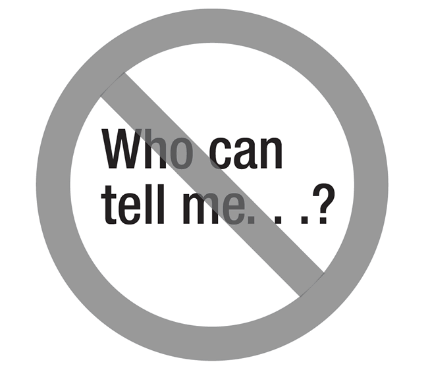A Note About Calling on Trainees
Why Calling on a Student Should be the Last Thing You Do2

Most of us would agree that creating opportunities for students to use higher-order thinking is a worthy goal for teachers in K-12 and college-level classrooms, but when it comes to how we design our daily lessons, these opportunities are often left largely to chance. Even though we may take the time to generate strong questions that are aimed at pushing students to a point of strong analysis and reflection, we often do little to make sure students are held accountable to actually process those same questions we worked so hard to create.
When we start our line of questioning with phrases like “Who can tell me…?” we risk minimizing the learning for too many of our students. The phrase, “Who can tell me,” often gives us just that—the student who can tell us. It may just be that the student who can tell us is the only student who can tell us. Picture a teacher holding a beach ball. She/he can only throw it to one student at a time. A traditional Q & A is like the tossing of a metaphorical beach ball. Where higher-order questioning is concerned, tossing beach balls presents quality learning options for volunteers, but offers no guarantees that any of the other students are involved, learning, or even interested.
Though the beach ball Q & A is far too common a problem, it is not a difficult problem to solve. If we’re going to provide practical solutions to the disengagement and missed learning opportunities that are often credited with being a major contributor to the achievement gap, we’ll need to first get rid of the traditional Q & A, particularly in the case of higher-order questions. We propose that higher-order prompts be processed using a structure that we call The Ripple. Using a ripple analogy, every higher-order prompt is processed in this way:
- Every individual student responds to the prompt using what we’ve coined as the Total Participation Technique. (This step can be visualized as the center of the ripple.)
- Next, each student has an opportunity to share in pairs or small groups (the first ripple).
- Finally, volunteers or selected students share in a whole group format (the outer ripple).
Using this 3-part ripple analogy, calling on someone is left for the final step. In other words, calling on someone is the last thing we do. Not every question deserves the attention that a ripple would provide, but students will often benefit from this type of attention placed on higher-order questions.
2 ASCD Guest Blogger (Pérsida and William Himmel) March 19, 2018. Downloaded fromhttps://inservice.ascd.org/why-calling-on-a-student-should-be-the-last-thing-you-do/
